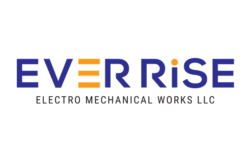As the global focus on sustainability and energy efficiency intensifies, Mechanical, Electrical, and Plumbing (MEP) solutions have emerged as critical components in creating eco-friendly and cost-effective buildings. Integrating sustainable MEP solutions not only reduces energy consumption and operational costs but also minimizes environmental impact and enhances indoor air quality. This article explores the significance of sustainable and energy-efficient MEP solutions and how they contribute to a greener future.
Importance of Sustainable MEP Solutions
1. Energy Conservation
Sustainable MEP solutions incorporate advanced energy-efficient technologies such as LED lighting, HVAC optimization, and renewable energy sources like solar panels. These measures significantly lower energy consumption, reducing carbon footprints and utility bills.
2. Water Efficiency
Plumbing systems in sustainable buildings utilize water-saving fixtures, rainwater harvesting, and greywater recycling to reduce water wastage. These strategies contribute to conservation efforts and ensure the efficient use of available water resources.
3. Enhanced Indoor Air Quality
Proper ventilation, air purification systems, and the use of non-toxic materials help maintain healthy indoor air quality. This not only improves occupant comfort but also reduces health risks associated with poor air circulation and pollutants.
4. Smart Building Integration
The use of Building Management Systems (BMS) and Internet of Things (IoT) technology allows real-time monitoring and control of MEP systems. Smart automation enhances energy efficiency, detects faults early, and optimizes performance based on occupancy and environmental conditions.
Key Sustainable MEP Strategies
1. HVAC Optimization
Heating, Ventilation, and Air Conditioning (HVAC) systems account for a significant portion of a building’s energy consumption. Sustainable HVAC solutions include:
High-efficiency heat pumps
Variable Refrigerant Flow (VRF) systems
Demand-controlled ventilation
Geothermal heating and cooling
2. Renewable Energy Integration
Incorporating renewable energy sources, such as solar panels, wind turbines, and energy storage systems, reduces dependence on non-renewable resources and lowers greenhouse gas emissions.
3. LED Lighting and Daylighting
Switching to LED lighting and maximizing natural light through architectural design reduces electricity consumption while enhancing visual comfort.
4. Water Recycling and Conservation
Rainwater harvesting systems for irrigation and flushing
Low-flow fixtures and sensor-based faucets
Greywater recycling for non-potable applications
5. Sustainable Materials and Insulation
Using eco-friendly insulation materials, recycled construction materials, and energy-efficient windows helps regulate indoor temperatures, reducing heating and cooling demands.
Benefits of Implementing Energy-Efficient MEP Solutions
Cost Savings: Reduced energy and water consumption lead to lower utility bills and maintenance costs.
Environmental Impact: Lower carbon emissions contribute to global sustainability efforts and climate change mitigation.
Regulatory Compliance: Many governments and organizations mandate sustainability standards, such as LEED (Leadership in Energy and Environmental Design) certification.
Enhanced Property Value: Green buildings attract environmentally-conscious tenants and buyers, increasing property demand and value.
Occupant Well-Being: Improved indoor air quality and energy-efficient systems enhance comfort and productivity.
Conclusion
Sustainable and energy-efficient MEP solutions are no longer optional but essential for modern construction and urban development. By integrating smart technologies, renewable energy sources, and efficient plumbing and HVAC systems, businesses and homeowners can create cost-effective and environmentally responsible buildings. As the industry continues to evolve, adopting these solutions will play a crucial role in shaping a greener and more sustainable future for all.
By prioritizing sustainability in MEP design and implementation, we can reduce our carbon footprint, conserve resources, and enhance the overall quality of life while ensuring long-term economic and environmental benefits.
